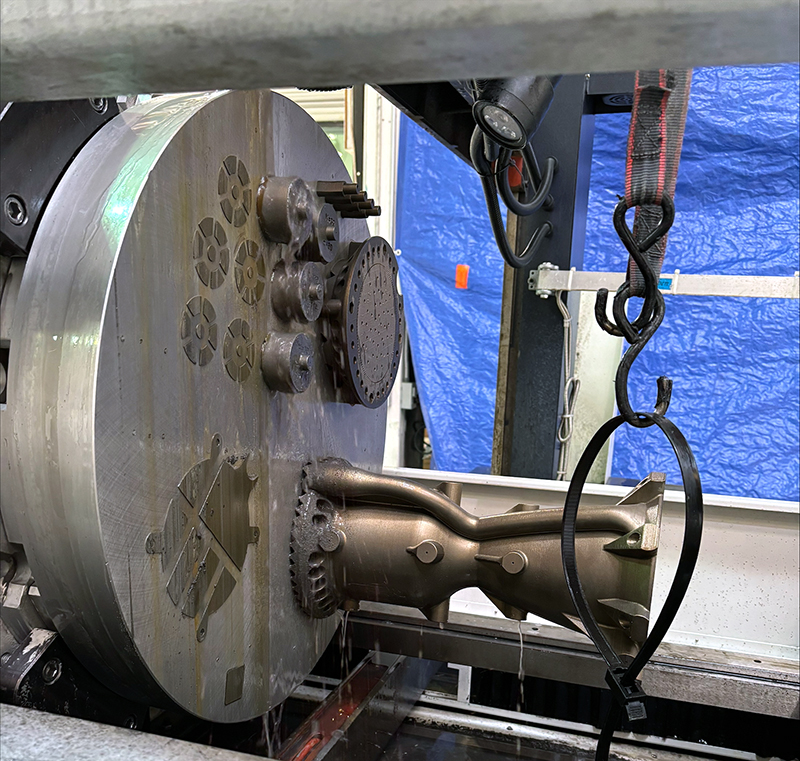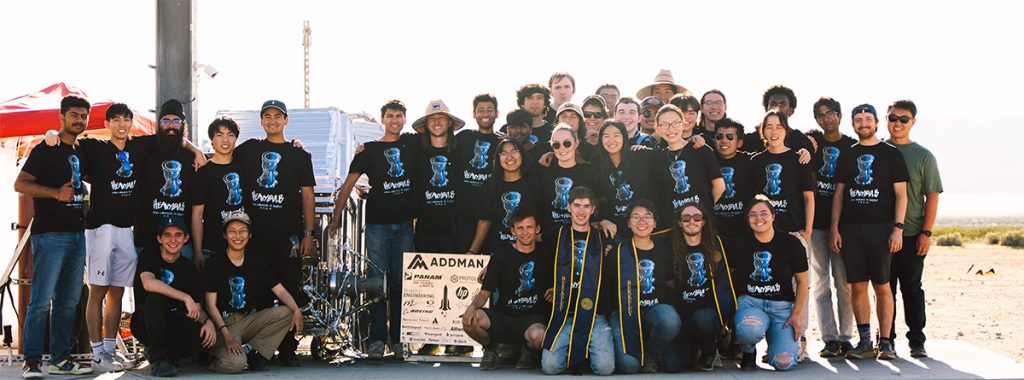The Challenge: Pushing the Boundaries of Collegiate Rocketry
Space Enterprise at Berkeley (SEB) is on a mission to become the first collegiate rocketry team to launch a liquid-fueled rocket past the Kármán Line—the boundary between Earth’s atmosphere and outer space. To achieve this ambitious goal, SEB conducts rigorous testing, launching multiple test-bed rockets and performing static fire tests to validate engine subsystems.
One of the critical challenges in this endeavor was optimizing the thrust and performance of SEB’s space shot rocket engine. Traditional manufacturing methods posed limitations on achieving the intricate designs required for a high-performance regeneratively cooled rocket engine. To overcome these constraints, SEB turned to ADDMAN’s metal 3D printing expertise to fabricate complex geometries with precision and reliability.
The Solution: Precision Metal 3D Printing for High-Performance Rocketry
To meet its performance targets, SEB designed Heavybulb, a regeneratively cooled liquid rocket engine utilizing Nitrous Oxide and Isopropyl Alcohol as propellants. Engineered to generate 1,800 pounds of thrust, Heavybulb required advanced manufacturing techniques to achieve its ultra-fine feature sizes, compact geometries, and precise internal channels.

How ADDMAN Contributed
With ADDMAN’s support, SEB leveraged cutting-edge metal additive manufacturing to refine and optimize their designs. Through collaboration with ADDMAN’s AM engineers, the student team gained hands-on experience with aerospace-grade materials and technologies that would have been otherwise inaccessible.
By 3D printing Heavybulb in Inconel 718, ADDMAN enabled SEB to achieve:
-
- Intricate injector geometries for efficient fuel mixing and combustion.
- Compact regenerative cooling channels to enhance engine performance.
- High-temperature durability to withstand the extreme pressures and heat generated during static fire tests.
Materials & Technology: Enabling Aerospace Innovation
Material Selection: Inconel 718
Heavybulb was printed in Inconel 718, a high-strength nickel alloy known for:
- Excellent heat resistance to withstand extreme combustion temperatures.
- Superior mechanical strength to handle the intense pressures inside the engine.
- Enhanced durability to maintain structural integrity through multiple test cycles.
 Printer Used: Velo3D Sapphire XC
Printer Used: Velo3D Sapphire XC
To fabricate the intricate design of Heavybulb, ADDMAN utilized the Velo3D Sapphire XC, a state-of-the-art metal 3D printer renowned for:
- Exceptional geometric precision to produce highly complex internal structures.
- Superior surface quality reducing the need for post-processing.
- Scalability for larger, high-performance aerospace components.
Key Performance Outcomes & Iterations
Heavybulb’s initial design targeted 1,800 pounds of thrust, but in static fire tests, it exceeded expectations, producing over 2,600 pounds of thrust due to off-nominal propellant consumption. This resulted in localized material melting, prompting the team to refine their engine design further.
Based on test data, SEB implemented several performance enhancements:
- Switched to Isopropyl Alcohol as the primary propellant – chosen for its superior thermal properties over Nitrous Oxide.
- Increased designed thrust to 2,700 pounds – optimizing performance based on real-world test results.
- Refined injector dimensions – improving fuel atomization and combustion efficiency.
- Integrated additional instrumentation sensors – enhancing monitoring of propellant flow and engine conditions.
These iterative improvements underscore the value of additive manufacturing—enabling rapid design changes, precision adjustments, and enhanced performance validation through testing.
Conclusion: A Collaborative Success in Rocketry
Last spring, SEB successfully hot-fired the first generation of their regeneratively cooled liquid bipropellant rocket engine, a major milestone in their pursuit of spaceflight. With ADDMAN’s advanced metal 3D printing capabilities, SEB successfully brought Heavybulb to life—pushing the boundaries of collegiate rocketry and gaining invaluable aerospace engineering experience along the way.
This collaboration underscores how strategic partnerships between academia and industry can accelerate technological innovation and prepare the next generation of engineers for real-world aerospace challenges.
